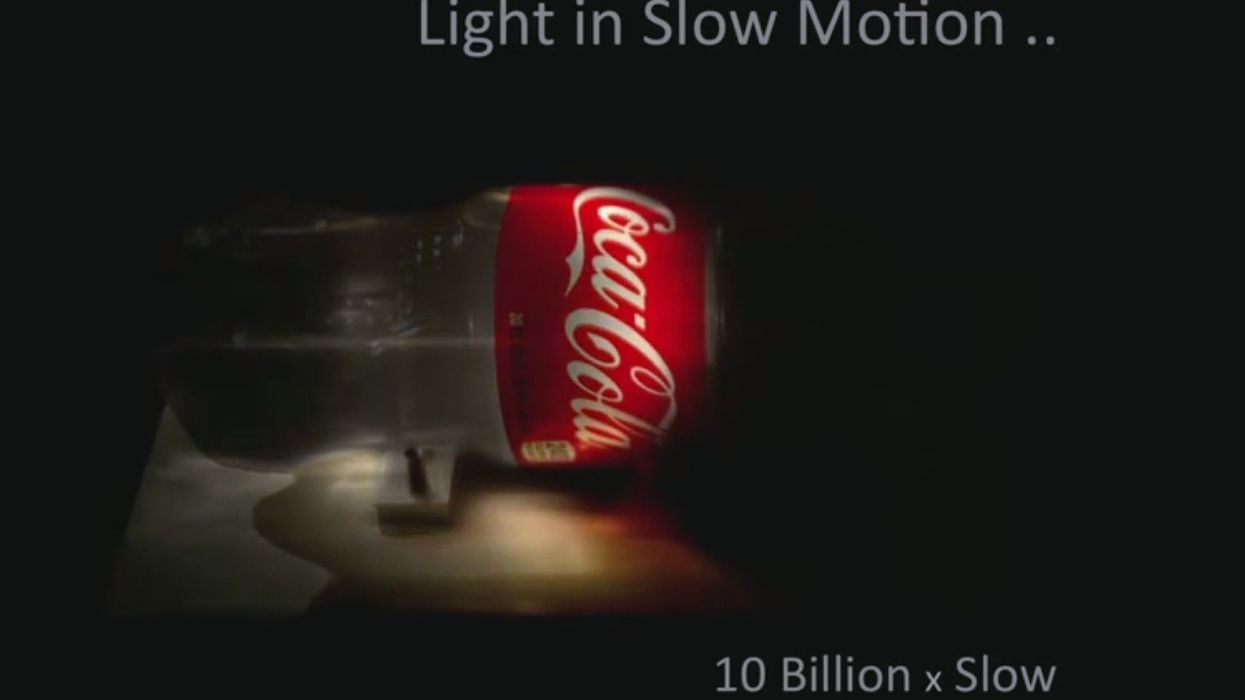Trillion Frames Per Second Camera Captures Photons in Action (That's 1,000,000,000,000 FPS)

You thought 240 or 480 frames per second on the FS700 was overkill? This is not an artist's tool, it's a scientific tool, but that doesn't mean the results are any less beautiful. A team at MIT has developed a camera made up of 500 hundred sensors that are triggered at a trillionth of a second delay. The way the camera actually works is rather brilliant (you know, these guys are from MIT), and it's able to capture photons as they move across a particular space and through different mediums. There is a great TED talk embedded below from Ramesh Raskar of MIT who is part of the team working on the camera.
Here's a description from the MIT website:
The new technique, which we call Femto Photography, consists of femtosecond laser illumination, picosecond-accurate detectors and mathematical reconstruction techniques. Our light source is a Titanium Sapphire laser that emits pulses at regular intervals every ~13 nanoseconds. These pulses illuminate the scene, and also trigger our picosecond accurate streak tube which captures the light returned from the scene. The streak camera has a reasonable field of view in horizontal direction but very narrow (roughly equivalent to one scan line) in vertical dimension. At every recording, we can only record a '1D movie' of this narrow field of view. In the movie, we record roughly 480 frames and each frame has a roughly 1.71 picosecond exposure time. Through a system of mirrors, we orient the view of the camera towards different parts of the object and capture a movie for each view. We maintain a fixed delay between the laser pulse and our movie starttime. Finally, our algorithm uses this captured data to compose a single 2D movie of roughly 480 frames each with an effective exposure time of 1.71 picoseconds.
Here is another video showing the behind-the-scenes of the project:
Some more videos below showing longer versions of some of their experiments:
While you're not going to be using this thing on your next film, it could be used for some seriously interesting videos. Watching light waves actually affect an object is absolutely incredible, and it makes light a little clearer to understand (since light actually exhibits properties of both particles and waves at the same time). There's no telling where this technology will take us into the future, and it's clear that our definition of what a camera is and what it is capable of could radically change in the not-too-distant future.
Links:











